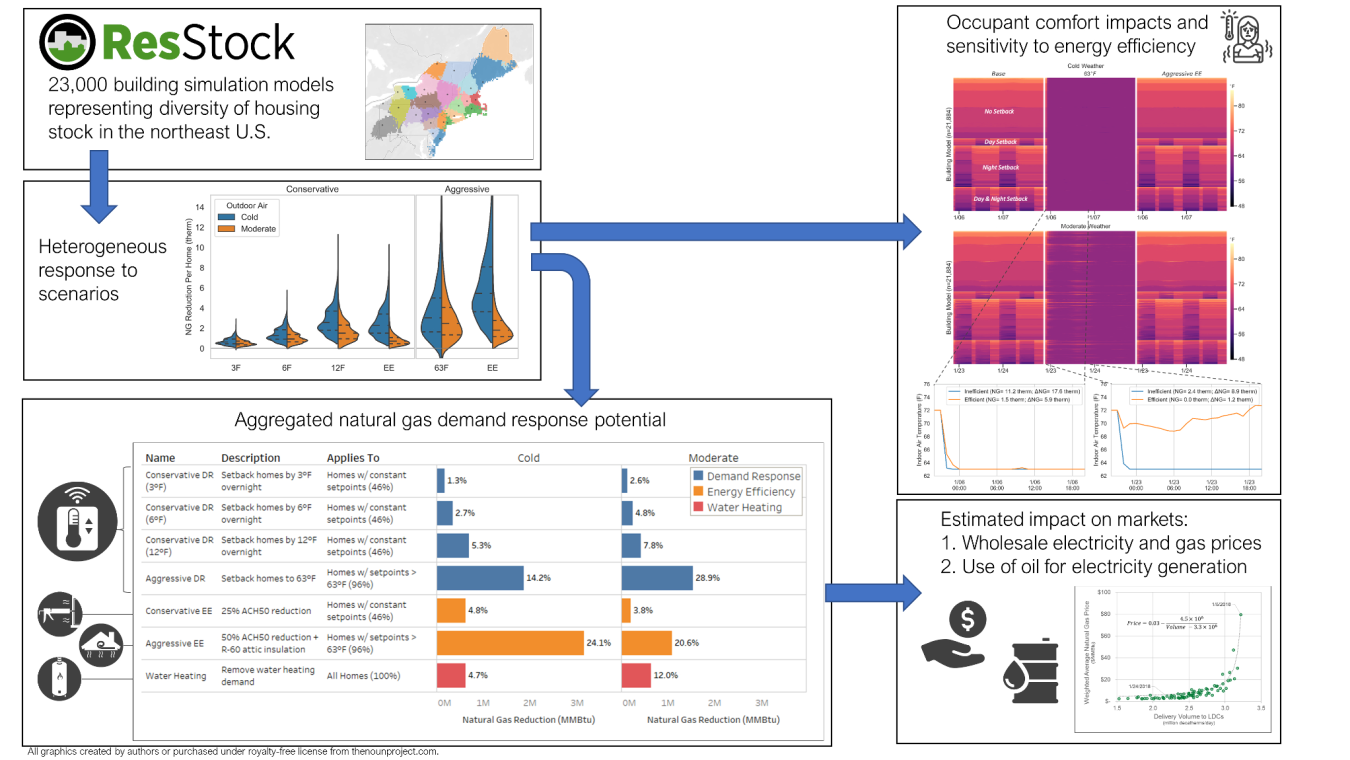
In regions where natural gas is used for both power generation and heating buildings, extreme cold weather events can place the electrical system under enormous stress and challenge the ability to meet residential heating and electric demands. Residential demand response has long been used in the power sector to curtail summer electric load, but these types of programs in general have not seen adoption in the natural gas sector during winter months. Natural gas demand response (NG-DR) has garnered interest given recent extreme cold weather events in the United States; however, the magnitude of savings and potential impacts—to occupants and energy markets—are not well understood. We present a case-study analysis of the technical potential for residential natural gas demand response in the northeast United States that utilizes diverse whole-building energy simulations and high-performance computing. Our results show that NG-DR applied to residential heating systems during extreme cold-weather conditions could reduce natural gas demand by 1–29% based on conservative and aggressive strategies, respectively. This indicates a potential to improve the resilience of gas and electric systems during stressful events, which we examine by estimating the impact on energy costs and electricity generation from natural gas. We also explore relationships between hourly indoor temperatures, demand response, and building envelope efficiency
